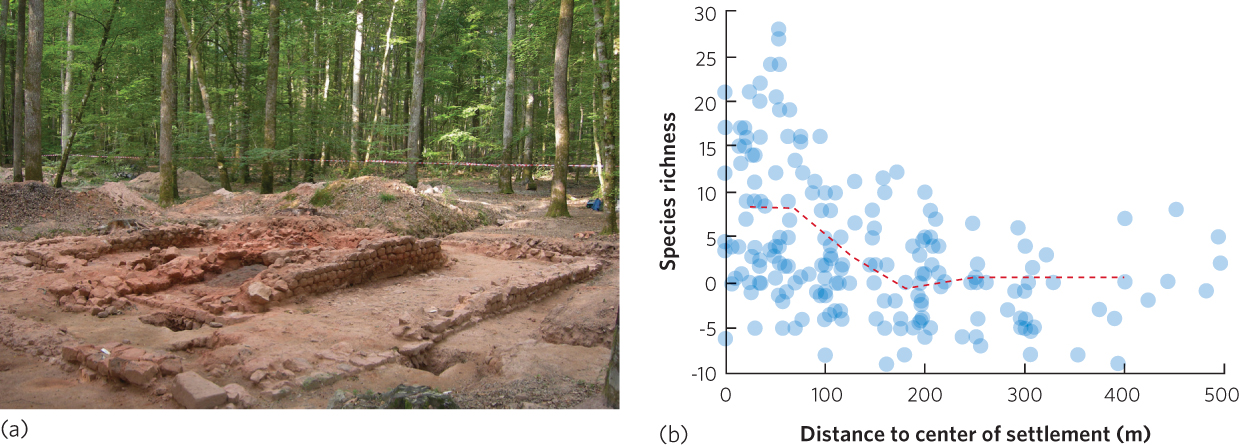
Figure 22.3 Legacy effects of humans on the landscape. (a) Ruins of Roman farming villages are present throughout northern France. These Gallo-Roman ruins are in the forest of Tronçais at the site of “Petit-Jardins” in Isle-et-Bardais, Allier. As the stone building materials weathered, they likely contributed calcium and phosphorus to the soil and altered the abiotic conditions. In addition, the Romans introduced numerous plant species. (b) Collectively, these changes created a legacy of more plant species living close to the old settlements with fewer species living 500 m away. The number of plant species represents the difference from the mean number of plant species found far from the settlements. The dashed line represents the changing mean species richness as one moves away from the center of the settlement.
Photo by Laure Laüt. Data from E. Dambrine et al., Present forest biodiversity patterns in France related to former Roman agriculture, Ecology 88 (2007): 1430–1439.